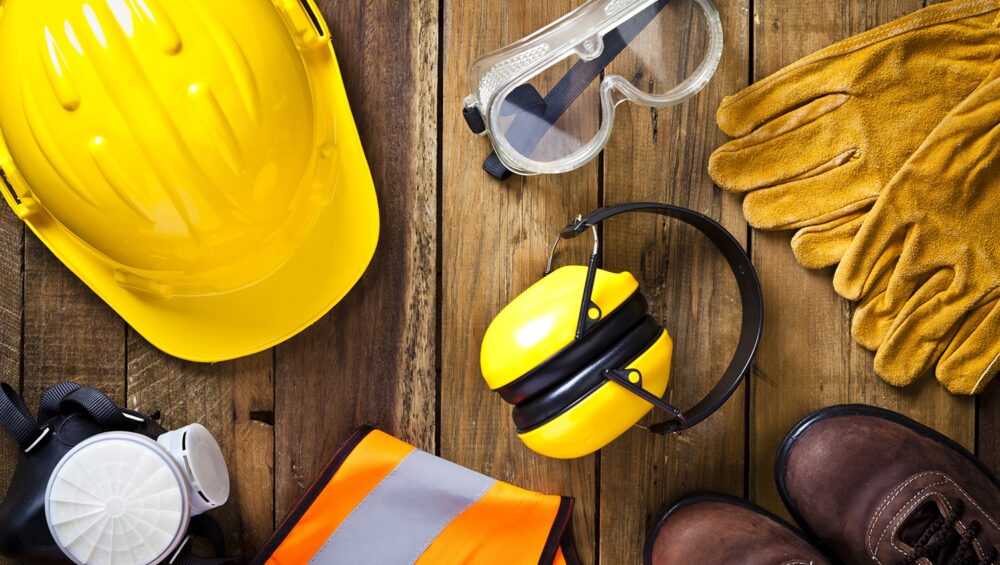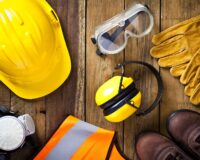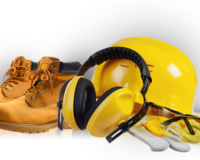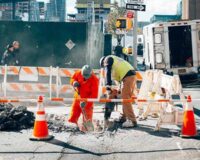Understanding PPE: A Comprehensive Guide
In today’s fast-paced world, where acronyms are abundant, one that has gained significant prominence is “PPE.” You might have encountered this term in various contexts, but what exactly does PPE mean? We are here to provide you with a comprehensive guide to demystify the acronym, explore its different facets, and understand its critical importance in various fields.
What is PPE?
PPE stands for Personal Protective Equipment. It encompasses a wide range of specialized clothing and equipment designed to protect individuals from potential hazards in their work environment or during specific activities. PPE plays a crucial role in ensuring the safety and well-being of workers, professionals, and individuals across various industries.
The Importance of PPE
Workplace Safety
In the realm of occupational safety, PPE serves as a frontline defense against workplace hazards. Whether it’s a construction site, a chemical laboratory, or a healthcare setting, PPE is tailored to mitigate specific risks. For example, helmets protect against head injuries, safety goggles shield the eyes from chemicals, and steel-toed boots safeguard feet from heavy objects.
Healthcare Sector
In the healthcare sector, PPE has been in the spotlight more than ever due to the global COVID-19 pandemic. Medical professionals rely on PPE such as masks, gloves, gowns, and face shields to prevent the spread of infections and ensure the safety of both patients and themselves.
Industrial and Manufacturing
In manufacturing and industrial settings, PPE is essential to reduce the risk of accidents and injuries. Earplugs protect against noise-induced hearing loss, while respirators filter out harmful airborne particles. These measures not only protect workers but also enhance overall productivity.
Types of PPE
Let’s delve deeper into the various types of Personal Protective Equipment:
1. Head Protection
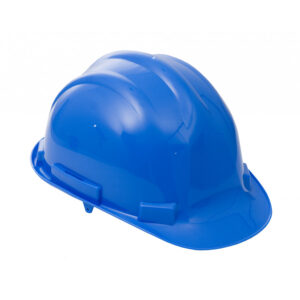
- Helmets: Essential in construction and industrial settings to safeguard against head injuries from falling objects or impacts.
- Hard Hats: Designed to resist penetration and absorb the shock of falling objects.
2. Eye and Face Protection
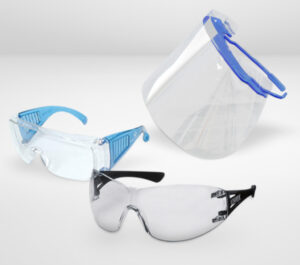
- Safety Glasses: Protect the eyes from debris, chemicals, and projectiles.
- Face Shields: Provide comprehensive face protection against splashes, chemicals, and other hazards.
3. Respiratory Protection
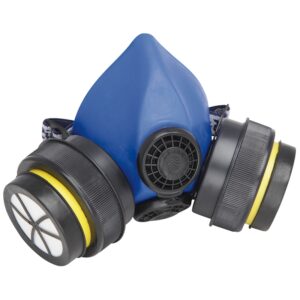
- Masks: Including N95 respirators, protect against airborne contaminants, including dust, fumes, and pathogens.
- Breathing Apparatus: Used in environments with insufficient oxygen or harmful gases.
4. Hand and Arm Protection
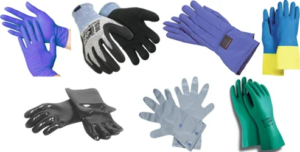
- Gloves: Available in various materials and designed for specific tasks, such as latex gloves for medical procedures and cut-resistant gloves in industrial settings.
- Sleeves: Protect arms from cuts, burns, and chemical exposure.
5. Body Protection
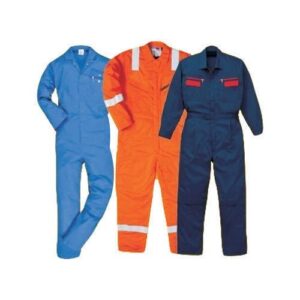
- Coveralls: Full-body suits used in hazardous environments to shield against chemicals and contaminants.
- Aprons: Commonly used in laboratories and kitchens to protect clothing from spills and splashes.
6. Foot and Leg Protection
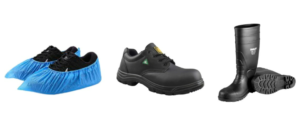
- Steel-Toed Boots: Prevent foot injuries from heavy objects and equipment.
- Leg Guards: Shield legs from cuts, sparks, and other potential hazards.
7. Hearing Protection
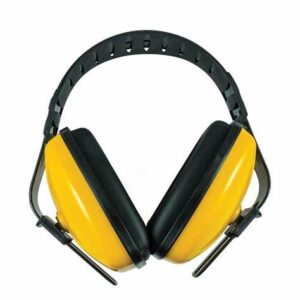
- Earplugs: Reduce noise exposure and prevent hearing loss.
- Earmuffs: Offer effective hearing protection in noisy environments.
Compliance and Regulations
To ensure the effectiveness of PPE, it’s essential to adhere to specific regulations and guidelines set forth by regulatory bodies and organizations. These standards vary depending on the industry and the nature of the hazards involved. For example, in the United States, the Occupational Safety and Health Administration (OSHA) provides guidelines and regulations for workplace safety, including PPE requirements.
Conclusion
In conclusion, PPE—Personal Protective Equipment—is an integral component of safety in various industries and settings. Its importance cannot be overstated, as it serves as a crucial line of defense against a wide array of potential hazards. Whether you’re a healthcare professional, a construction worker, or anyone who values safety, understanding PPE and its various types is essential for your well-being and the well-being of those around you.
Remember, knowledge and proper utilization of PPE are key to maintaining a safe and secure environment. By familiarizing yourself with the different types of PPE and adhering to relevant regulations, you contribute to a safer and healthier world for all.
Why is it Important?
The Paramount Importance of PPE
1. Injury Prevention
The primary and most evident benefit of PPE is injury prevention. By wearing the appropriate gear, workers significantly reduce the risk of accidents. For example, a construction worker donning a hard hat is less likely to suffer a head injury from a falling object.
2. Minimization of Health Risks
In hazardous environments, exposure to chemicals, pathogens, or harmful substances can lead to severe health issues. Respirators, gloves, and specialized suits act as an effective barrier, preventing contact with these harmful agents.
3. Enhanced Productivity
Safety and productivity go hand in hand. When employees feel secure in their workplace, they can focus on their tasks without the distraction of potential hazards. This, in turn, leads to increased efficiency and better job performance.
4. Compliance with Regulations
In many industries, regulatory bodies mandate the use of PPE. Failing to comply with these regulations can result in severe penalties. Therefore, businesses not only ensure the safety of their employees but also maintain legal compliance by providing and enforcing the use of PPE.
5. Reduced Liability
In the unfortunate event of an accident, having a well-documented PPE program in place can reduce a company’s liability. It demonstrates a commitment to safety and can be crucial in legal proceedings.
The Diversity of PPE Applications
PPE isn’t confined to a single industry or job type; its applications are diverse and far-reaching. Here are some industries where PPE is an absolute necessity:
1. Construction Industry
Construction sites are rife with potential dangers, from falling debris to exposure to hazardous materials. PPE is a non-negotiable requirement for all workers on construction sites.
2. Healthcare Sector
In hospitals and healthcare facilities, PPE is the frontline defense against infectious diseases. Doctors, nurses, and healthcare workers rely on PPE like masks, gloves, and gowns to protect themselves and patients.
3. Manufacturing and Industrial Settings
Factories and industrial plants often involve heavy machinery, chemicals, and loud environments. Workers in these settings depend on PPE to stay safe and productive.
4. Agriculture
Farmers and agricultural workers face a variety of risks, including exposure to pesticides and heavy equipment operation. PPE such as gloves, goggles, and respirators are essential tools in this industry.
5. Emergency Services
First responders, including firefighters and paramedics, confront unpredictable and hazardous situations. PPE is their shield against flames, toxic fumes, and infectious diseases.
Conclusion
In conclusion, the importance of PPE cannot be overstated. It is not merely a set of gear; it is a lifeline, a guardian of well-being, and a pillar of safety in diverse workplaces. By preventing injuries, minimizing health risks, and enhancing overall productivity, PPE safeguards not only the workers but also the integrity and success of businesses. Compliance with regulations, reduced liability, and its indispensable role in various industries make PPE an absolute necessity.
So, why is PPE important? It’s the guardian angel that watches over workers, ensuring they return home safely each day. To neglect its significance is to jeopardize the very foundation of workplace safety. Let’s remember, in the realm of occupational safety, PPE is not an option; it’s a necessity.
PPE Safety Requirements
Certainly, let’s delve into the essential safety requirements when it comes to Personal Protective Equipment (PPE). Ensuring that PPE is not only available but also used correctly is paramount to guarantee the safety of individuals in various work environments. Below, we’ll outline some crucial safety requirements associated with PPE.
1. Proper Selection of PPE
The first and foremost safety requirement is the proper selection of PPE. It’s imperative to choose the right type of equipment that corresponds to the specific hazards present in a given workplace. Conducting a thorough hazard assessment is essential in this regard. For instance:
- Identify potential hazards: This includes recognizing the types of hazards employees might encounter, such as falling objects, chemicals, electrical currents, or biological agents.
- Select appropriate PPE: Based on the identified hazards, choose the corresponding PPE. This could range from hard hats for head protection to gloves for hand protection and respirators for respiratory protection.
2. Training and Education
Once the appropriate PPE is selected, proper training and education are essential. Employees should be well-versed in the following aspects:
- How to wear PPE correctly: Improper usage can render PPE ineffective. Training should cover the proper way to put on, adjust, and take off each piece of equipment.
- Maintenance and storage: Employees should know how to maintain and store their PPE properly to ensure its longevity and effectiveness.
- Limitations and lifespan: Understanding the limitations of PPE and when it should be replaced is crucial. PPE has a finite lifespan and should be replaced when damaged or expired.
3. Regular Inspections
Regular inspections of PPE are necessary to identify any signs of wear and tear. Employers should establish inspection protocols, including:
- Daily visual checks: Employees should inspect their PPE daily before use. This includes looking for cracks, tears, or other visible damage.
- Periodic inspections: Employers should conduct more thorough inspections at regular intervals to ensure that PPE remains in good condition.
4. Fit Testing
Certain types of PPE, such as respirators, require fit testing. Fit testing ensures that the equipment creates a proper seal and provides the intended protection. It’s critical to conduct fit testing for employees who use respirators to protect against airborne hazards.
5. Comfort and Accessibility
PPE should be comfortable to wear for extended periods, as discomfort can lead to non-compliance. It should also be easily accessible to employees, so they are more likely to use it consistently.
6. Documentation and Records
Maintaining accurate records related to PPE is another safety requirement. This includes:
- Records of training: Documenting when employees receive training on PPE usage.
- Inspection records: Keeping records of PPE inspections, including dates and findings.
- Replacement records: Documenting when PPE is replaced and the reason for replacement.
7. Emergency Procedures
Employees should be familiar with emergency procedures when using PPE. This includes knowing how to respond in case of equipment failure or if a hazard exceeds the protection provided by the PPE.
8. Regulatory Compliance
Finally, it’s essential to stay in compliance with relevant safety regulations and standards. Different industries and regions may have specific requirements regarding PPE. Staying informed and compliant is crucial to ensure a safe working environment.
In conclusion, adhering to these safety requirements for PPE is vital to protect the well-being of employees in various work settings. Proper selection, training, inspection, and compliance with regulations are all integral components of a robust PPE safety program. By following these guidelines, organizations can help prevent workplace injuries and promote a culture of safety.
COVID-19 Prevention and Control
Certainly, in the wake of the COVID-19 pandemic, understanding and implementing effective prevention and control measures are paramount. Safeguarding the health and well-being of individuals, communities, and society as a whole depends on a comprehensive approach. In this article, we will explore essential strategies for COVID-19 prevention and control.
1. Promoting Hygiene Practices
Hand Hygiene: Regular handwashing with soap and water for at least 20 seconds remains one of the most effective preventive measures. Hand sanitizers with at least 60% alcohol can be used when soap and water are not readily available.
Respiratory Hygiene: Encourage individuals to cover their mouth and nose with a tissue or their elbow when coughing or sneezing to prevent the spread of respiratory droplets.
2. Mask-Wearing
Wearing masks, especially in indoor and crowded settings, helps reduce the transmission of the virus. Masks act as a barrier that captures respiratory droplets containing the virus, protecting both the wearer and those around them.
- N95 Respirators: These masks offer the highest level of protection and are recommended for healthcare workers and individuals at high risk.
- Surgical Masks: These masks are effective at reducing the spread of respiratory droplets and are suitable for general use.
3. Social Distancing
Maintaining physical distance from others is crucial in preventing the spread of COVID-19. The recommended distance is typically about six feet (two meters) to reduce the risk of respiratory droplet transmission.
4. Vaccination
Vaccination is a cornerstone of COVID-19 prevention. Encourage eligible individuals to receive COVID-19 vaccines to build immunity against the virus. Vaccination not only protects individuals but also contributes to community-wide immunity.
5. Testing and Contact Tracing
Regular testing for COVID-19, especially in high-risk settings and among symptomatic individuals, helps identify cases promptly. Contact tracing allows for the notification and isolation of individuals who may have been exposed to the virus.
6. Ventilation and Air Quality
Improving indoor ventilation and air quality can reduce the concentration of viral particles in enclosed spaces. Proper ventilation includes increasing outdoor air circulation, using air purifiers, and upgrading HVAC systems.
7. Quarantine and Isolation
Individuals who test positive for COVID-19 should isolate themselves to prevent further spread. Close contacts of confirmed cases should quarantine to monitor for symptoms and prevent potential transmission.
8. Travel Restrictions and Guidelines
Travel restrictions and guidelines should be followed to minimize the risk of virus transmission across regions and countries. Check for the latest travel advisories and requirements before planning any trips.
9. Promoting Public Awareness
Public awareness campaigns are essential to educate communities about COVID-19 prevention and control measures. These campaigns should include information on symptoms, testing locations, vaccination sites, and safety protocols.
10. Compliance with Health Regulations
It is vital for individuals and businesses to comply with local, state, and national health regulations and guidelines. This includes adhering to capacity limits, mask mandates, and other preventive measures mandated by authorities.
11. Monitoring and Adaptation
The COVID-19 situation is dynamic, with new variants and changing circumstances. Continuously monitor the situation and adapt preventive measures accordingly. Staying informed through reliable sources is crucial.
Conclusion
COVID-19 prevention and control require a collective effort that involves individuals, communities, businesses, and governments. By adhering to hygiene practices, mask-wearing, social distancing, vaccination, and other essential strategies, we can slow the spread of the virus, protect vulnerable populations, and ultimately overcome this global challenge. It is our shared responsibility to take these measures seriously and contribute to the health and safety of our communities.
The 5Basic Types of PPE and Their Examples
Personal Protective Equipment (PPE) is crucial for safeguarding individuals from various workplace hazards. There are five basic types of PPE, each designed to protect different parts of the body and address specific risks. Let’s explore these categories along with examples of PPE for each type:
1. Head Protection
Examples of Head Protection PPE:
- Hard Hats: These protective helmets are commonly used in construction and industrial settings to shield the head from falling objects, electrical hazards, and impact injuries.
- Bump Caps: Bump caps are less rugged than hard hats but still offer protection against minor head bumps and scrapes. They are often worn by workers in warehouses or facilities with low overhead clearance.
2. Eye and Face Protection
Examples of Eye and Face Protection PPE:
- Safety Glasses: These glasses have impact-resistant lenses and are used to protect the eyes from flying debris, dust, chemicals, and splashes. They are commonly worn in construction and manufacturing.
- Face Shields: Face shields provide additional protection for the face, particularly against splashes of hazardous liquids or chemicals. They are used in laboratories, healthcare settings, and industries with potential facial exposure.
3. Respiratory Protection
Examples of Respiratory Protection PPE:
- N95 Respirators: These respirators filter out at least 95% of airborne particles, making them effective against dust, smoke, and infectious agents like viruses. They are widely used in healthcare and during outbreaks like the COVID-19 pandemic.
- Half-Face or Full-Face Respirators: These masks cover the nose and mouth (half-face) or the entire face (full-face) and are used in settings with higher levels of respiratory hazards, such as chemical or biological contaminants.
4. Hand Protection
Examples of Hand Protection PPE:
- Gloves: Gloves come in various materials (e.g., latex, nitrile, leather) and are designed for specific tasks. They protect against chemicals, cuts, abrasions, and infectious materials. For instance, nitrile gloves are commonly used in healthcare settings, while leather gloves are used in construction.
- Heat-Resistant Gloves: These gloves are designed to withstand high temperatures and are used in industries like welding or metalworking.
5. Body Protection
Examples of Body Protection PPE:
- Coveralls: Coveralls are one-piece garments that provide full-body protection against chemical splashes, hazardous dust, or biological contaminants. They are used in laboratories, cleanrooms, and industries with high chemical exposure.
- Aprons and Lab Coats: These protective garments shield the front of the body from splashes and spills. They are commonly worn by laboratory workers and healthcare professionals.
These are the five basic types of PPE, and their examples highlight their diversity and the specific protection they offer. It’s crucial to select the appropriate PPE based on the hazards present in a given workplace to ensure the safety and well-being of workers. Additionally, proper training on the correct usage and maintenance of PPE is essential to maximize its effectiveness and protect against potential workplace hazards.

